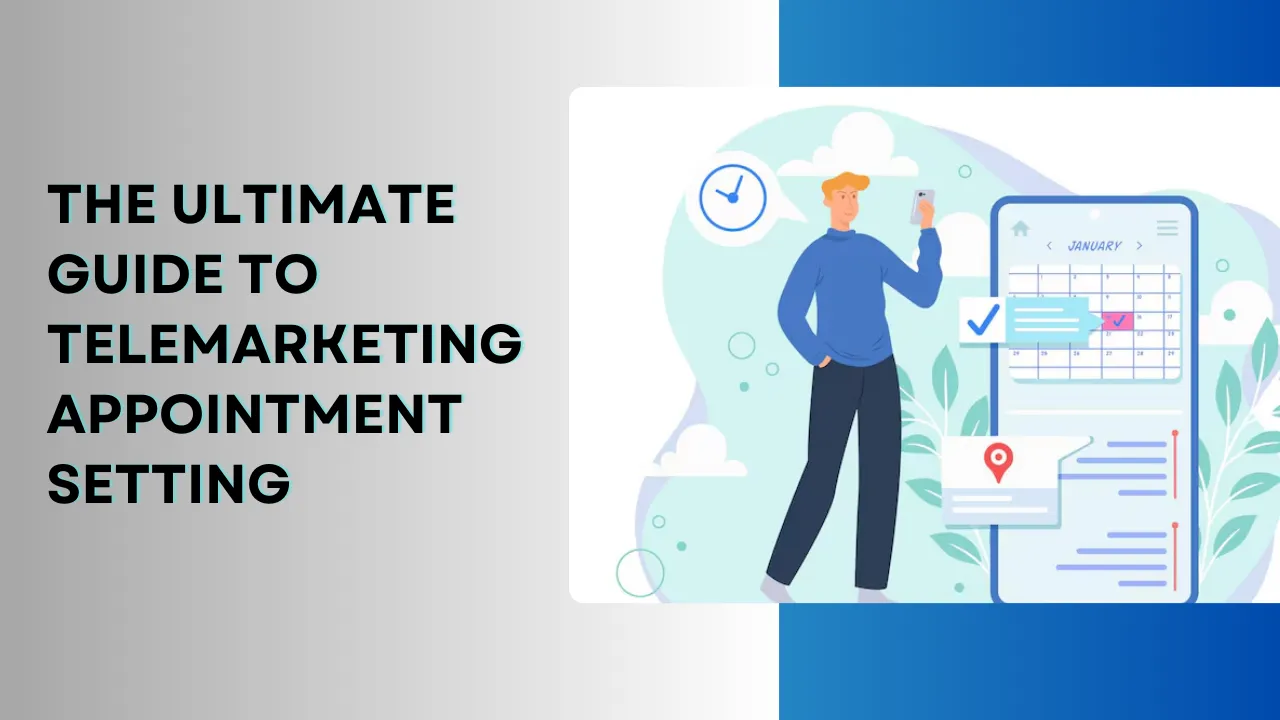Telemarketers can use a number of strategies to increase their appointment setting rates. This includes leveraging data analytics, sharing customer success stories, and name-dropping high-profile customers to build trust and establish credibility.
Appointment setting is a critical part of telemarketing and requires both tenacity and creativity to secure more productive meetings. This article will examine some of the most effective strategies for achieving a higher appointment kept rate.
Best Practices
One of the keys to successful appointment setting is understanding the needs of prospects. This involves conducting research and leveraging data to inform prospect outreach. It also requires strong written and verbal communication skills to build rapport with prospects and convey product value. Investing in training, role-playing, and mock interviews can help to develop these skills. It may also be helpful to shadow a more experienced appointment setter in your field to learn from their experience.
The appointment-setting process can be time-consuming, and it is not uncommon to speak with multiple people at a single business before you secure a meeting. However, it is important to stay persistent and treat each call as an opportunity to move closer to your sales goal.
Mastering appointment setting requires the ability to qualify leads effectively, overcome objections, and provide detailed information. Telemarketers can do this by engaging in a conversation with prospects to understand their needs, preferences, and budget. They can then use this information to make a personalized pitch that increases the likelihood of converting them into customers.
Another best practice is to utilize social proof, such as case studies and testimonials, in your telemarketing campaigns. This can increase your appointment-setting success rate by building trust with your prospects and demonstrating that your products or services have helped others in the past.
Tools and Resources
Whether your sales team is utilizing email, text, or online chat to communicate with prospects, you need to provide them with the tools to be effective. These tools include call recording software, which allows you to listen in on calls for quality assurance purposes and provides feedback for coaching and training.
Another important tool is customer relationship management (CRM) software, which allows you to manage prospect information and track communications. This can help you ensure that no promising lead falls through the cracks and enables your sales team to focus on delivering a high-quality client experience.
To optimize your appointment setting strategy, it’s critical to continuously review and refine your ideal client profile, test different scripts and messaging, and invest in ongoing training and coaching for your team. This will allow you to connect with your target audience more effectively and ultimately boost conversion rates and ROI.
It’s also important to be flexible and open to new technologies. For example, some telemarketing companies use predictive dialing software to automate the scheduling process and improve productivity. Other tools, like calendaring software and presentation-creating platforms such as Storydoc, can be useful for connecting with prospects beyond the phone. Some software even notifies businesses when their website visitors view certain pages, which can be helpful for re-engaging with interested leads.
Telemarketing vs. Traditional Methods
Telemarketing can be used as a standalone marketing strategy or in conjunction with other marketing channels. Whether used as an inbound channel to respond to customer queries or as a outbound channel to sell products and services, it can prove to be very effective at generating leads and sales for businesses.
Telemarketers can be hired from a range of sources. They can work in call centers or do home-based telemarketing. They can be business-to-consumer (B2C) or business-to-business (B2B) telemarketers. Some telemarketers specialize in appointment setting, whereas others focus on lead generation or product demonstrations.
When compared to traditional marketing methods, telemarketing offers a number of advantages. Unlike television, radio or print ads, telemarketing allows companies to make real-time changes to their messaging based on feedback from customers and market trends. It is also more cost-effective than advertising campaigns and other types of direct marketing.
Additionally, telemarketing offers the opportunity to engage with potential customers directly and provide a personalized experience. This can help to build trust and credibility, as well as encourage customer loyalty. Finally, telemarketing can be used to upsell or cross-sell existing customers, increasing the value of each transaction. These are all factors that can contribute to improved ROI for businesses. Despite the stigma attached to it, telemarketing remains an important tool for businesses that wish to generate leads and achieve sales targets.
Measuring Success
To achieve success in telemarketing appointment setting, companies need to develop a strategic approach that is aligned with business goals. KPIs and metrics serve as a compass for this journey, guiding teams toward the right opportunities.
One key to successful appointment-setting efforts is ensuring that the meeting agenda and content are tailored to each prospect, rather than using generic scripts that don’t resonate with them. Additionally, utilizing data analytics to shape prospecting strategies can help businesses increase their conversion rates. For example, if a team notices that prospects are most responsive to calls in the morning, they can make adjustments to their calling schedule and messaging to boost their performance.
Moreover, showcasing customer success stories can help companies establish trust and credibility with prospective customers. Likewise, using open-ended questions to show that you are interested in the prospect’s business and its challenges can increase engagement and ultimately improve your chances of securing an appointment.
Ultimately, mastering the art of telemarketing appointment setting can help your business drive sales and revenue growth. By implementing best practices, leveraging technology, and regularly reviewing and optimizing appointment-setting processes, your organization can stay ahead of the competition and continue to grow its sales pipeline. Just remember to keep measuring and analyzing your results along the way to ensure that your strategy continues to deliver value for your business.
